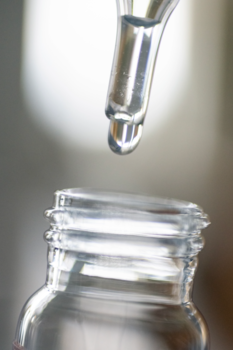In This Story
When Kirin Emlet Furst heard a friend in Louisiana complain that their tap water never ran cold, she began to wonder about the impact of global warming on drinking water distribution systems.

"When we think about extreme heat and the urban heat effect, we think about the above ground impacts,” said Furst, “but I think [regarding] some of these kind of buried, invisible, secondary impacts, we're only just starting to realize how concerning some of those might be.”
When she investigated, Furst found a lack of research addressing summertime drinking water temperatures in areas that get as hot as, say, the southwestern United States. Furst explained that typical water distribution systems are usually buried between one and three feet deep, in which case, “it only takes a few days for the ground that deep to calibrate to the air temperature.” She continued, “So, if it's like 120 degrees Fahrenheit in Phoenix for a week, then it's most likely 120 degrees in the drinking water system–which is like 30 degrees higher than anybody has really assumed.”
Furst, a CEIE professor who specializes in water quality engineering, has received a grant from the National Science Foundation to examine how rising temperatures are affecting drinking water distribution systems in several areas across the United States. Specifically, she’s assessing disinfection processes to safeguard against pathogens in extremely hot environments.
After leaving a water treatment facility, water may spend over a week in an underground distribution system, said Furst. In that time, if the level of chlorine in the system is not sufficient, biofilms and other organisms can grow.
“One issue with temperature and disinfection, broadly, is that all reactions speed up with increasing temperature,” said Furst. “For disinfectants, what this means is that basically the disinfectant like chlorine in the distribution system is consumed faster. If a system doesn't have automatic chlorine boosters that are constantly adjusting for that and introducing more chlorine to maintain the target level, then you can lose your residual in the distribution system, which means that you lose protection against pathogens in the distribution system.”

Meanwhile, Furst noted, many pathogens grow better under warmer conditions.
Furst brought her ideas to Katherine Graham at the Georgia Institute of Technology, a friend of Furst’s since they met while earning PhDs in environmental engineering at Stanford University.
“She's interested in Legionella, which causes Legionnaire’s disease,” Furst said. “And that's one of those bacteria that does really well at higher temperatures.”
Furst and Graham will do lab experiments and collaborate with water utilities in several places across the country where extreme heat occurs to look at the effect of high temperatures on disinfection and pathogens. Furst will compare how conventional chlorine performs as a disinfectant compared to an alternative source of chlorine, which preliminary data suggest might be more resilient to high temperatures. Meanwhile, Graham will examine how well Legionella survives under the combined stressors of heat and conventional chlorine disinfection or heat and disinfection by the alternative source of chlorine, respectively. They call their project the “hot pipes” project.
Disinfection isn’t the only issue of concern when considering how rising temperatures might affect water distribution systems, Furst noted. For example, physical infrastructure failures such as pipe breakages and pump failures increase at higher temperatures. She added, “I think we'll be learning a lot more about the different ways that our infrastructure can fail during high temperatures.”
